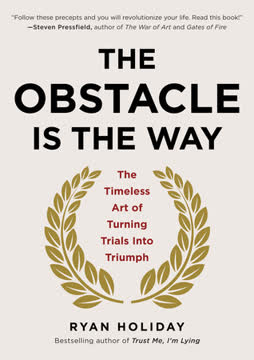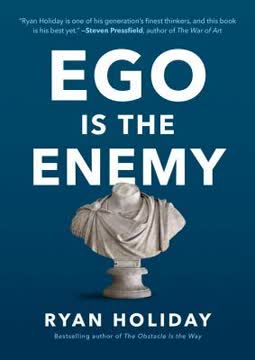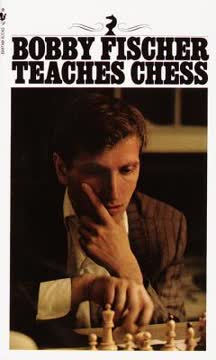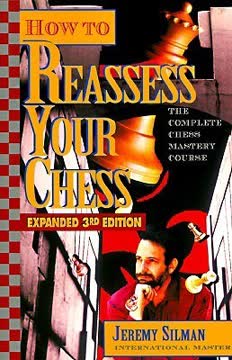Key Takeaways
1. Focus on the Most Important Positions and Ideas
The major portion of all practical chess knowledge is represented in this little book of 188 pages.
Maximize results, minimum time. Becoming a strong chess player isn't about knowing everything, but knowing the most important things. This book distills decades of teaching experience into 300 essential positions and ideas, representing the core practical knowledge needed for tournament play. Studying these positions ensures you are acquiring high-value knowledge that will frequently appear in your own games.
Sifting gold from silt. Not all chess knowledge is equally valuable. Players can waste vast amounts of time on impractical information that is rarely used or quickly forgotten. The key is to identify and focus on the fundamental patterns and concepts that form the bedrock of strong play, allowing you to build a solid foundation efficiently.
Essential knowledge is practical. The positions in this book are chosen because they are practical and recurring. By internalizing them, you build a mental database that helps you recognize similar situations in your games, guiding you toward the best course of action and accelerating your development as a player.
2. Treat Positions as "Zipped Files" for Efficient Learning
The 300 positions in this book are very much “zipped files.”
Compact knowledge. Think of each position as a compressed file containing volumes of chess wisdom. When you engage with a position, your problem-solving skills act as the "special programs" that "unzip" the file, revealing its full detail and making connections to other knowledge you possess. This allows for efficient storage and retrieval of complex ideas.
Expand and connect. Studying a single position isn't just about finding the immediate solution; it's about understanding the underlying principles and how they apply in various contexts. Each position can expand your understanding and connect to other tactical, strategic, or endgame concepts, providing a rich learning experience from a compact source.
More helpful than volumes. The right positions, effectively explained, can be far more beneficial than extensive, unfocused study. By focusing on these concentrated examples, you gain deep understanding and practical knowledge that is easily accessible during a game, unlike vast amounts of less relevant information.
3. Develop Both Analytical Skills and Intuition
Use This Book to Develop Both Your Analytical Skills and Your Intuition!
Two crucial abilities. Strong chess players rely on both concrete analysis (calculating variations by visualizing moves) and intuition (having a "feeling" for the right move or plan without deep calculation). This book helps train both, which are essential for navigating the complexities of a game.
Training methods.
- Intuition: Spend 1-2 minutes per position, making a quick decision based on feel. Don't worry about being perfect initially.
- Analysis: Spend up to 20 minutes (or more for complex ones) per position, calculating variations deeply without moving pieces. Aim for high accuracy.
Combine approaches. Integrate intuition and analysis by first using intuition for a quick assessment, then performing detailed analysis. This simulates real game conditions where you often have limited time but need to calculate accurately. Checking your analysis afterward by moving pieces solidifies understanding.
4. Use Targeted Training Methods for Practical Skills
Finding the right balance between intuition, analysis, and time management skills is the object.
Practical, game-winning skills. Effective training goes beyond just solving puzzles; it builds skills directly applicable to tournament play. This includes balancing deep thought with time constraints and overcoming common mental habits like tunnel vision.
Specific training exercises:
- Dvoretsky's method: Solve 4 positions in 20 minutes, penalizing yourself for incorrect answers. This trains time management and decision-making under pressure.
- Alburt's antidote: Solve 1-2 out of 4 positions in 10-20 minutes, focusing on identifying all logical candidate moves, even if your first choice seems best. This combats tunnel vision.
Simulate real conditions. These methods force you to make decisions, manage your time, and consider multiple possibilities, just as you would in a competitive game. Regular practice with these techniques sharpens your practical playing abilities.
5. Build Your Own "Personal Theory" of Chess
To become a strong player, you will find it very helpful to begin to compile your own personalized chess theory.
Beyond memorization. While some positions require memorization (like key endgames), many illustrate broader conceptual ideas. Developing your own theory involves identifying which examples best communicate these ideas to you and organizing them in a way that makes sense for your learning style.
Compile and curate. Use the 300 positions as a foundation, but also add positions from your own games where you faced problems or made errors. Annotate these with correct lines and notes on avoiding future mistakes. This archive becomes a living document tailored to your specific needs and weaknesses.
Organize for clarity. Structure your personal theory logically, perhaps by opening, middlegame, and endgame, further subdividing by themes (tactical devices, strategic concepts). This organization makes review efficient and helps you see connections between different types of positions.
6. Master Essential Tactical Motifs and Mating Patterns
You must be able to visualize these final positions in advance; for example, certain typical mating patterns—and you must know how to arrive at them from different starting points...
Recognize winning opportunities. Strong players don't just calculate; they recognize patterns that suggest tactical possibilities. This book features positions illustrating common motifs like pins, skewers, deflections, decoys, interference, and various mating patterns (back-rank, smothered, Queen & Bishop, Rook & Knight, etc.).
Visualize the outcome. A key skill is visualizing the final position of a combination, especially typical mates. Knowing what the target looks like helps you work backward to find the sequence of moves that achieves it. Many positions in the book demonstrate these crucial patterns.
Tactics in context. Unlike puzzle books organized by theme, this book presents positions without hints, simulating real games where you must identify potential tactics yourself. This trains you to spot opportunities in complex, unannounced situations.
7. Understand Key Endgame Principles and Positions
To be a strong player, you do not need to know hundreds of King and Pawn endgame positions—but only 12 key positions.
Endgames are crucial. Many games are decided in the endgame, and knowing fundamental principles and key positions is vital. The book highlights essential endgames, such as King and Pawn endings (like the Rule of the Square, opposition, and King on the 6th rank) and Rook endings (like Lucena's and Philidor's positions).
Focus on the essentials. You don't need encyclopedic knowledge. Mastering a limited number of critical endgame positions provides the foundation for navigating most practical situations. These key positions teach universal principles applicable to many variations.
Practical application. The endgame positions teach concepts like pawn races, creating passed pawns, using the King effectively, and drawing techniques (like stalemate resources or perpetual checks). Recognizing these patterns allows you to play endgames confidently and accurately.
8. Learn to Fight in Lost Positions and Set Traps
In fact, sometimes the position is lost and the task is to find the course of action that makes it most difficult for your opponent to win.
Beyond winning. Not every position is a win. A crucial practical skill is knowing how to make it as hard as possible for your opponent when you are worse or even lost. This involves creating complications, setting traps, and forcing your opponent to think hard and potentially err, especially under time pressure.
Create pitfalls. Even in difficult positions, look for moves that offer your opponent chances to go wrong. This might involve sacrificing material to create a dangerous threat, offering a tempting but unsound capture, or forcing lines that are difficult to calculate accurately.
Maximize drawing chances. In lost endgames, understanding drawing resources like stalemate, perpetual check, or fortress positions is paramount. The book includes examples where the goal is not to win, but to save the game through clever defense or tactical tricks.
9. Consistency and Review are Crucial for Retention
By revisiting these 300 positions frequently, in a variety of contexts, you’ll make them never-to-be-forgotten, old friends who will come to your aid on many occasions.
Knowledge retention. Like water in a reservoir, chess knowledge can "evaporate." To ensure essential knowledge remains active and accessible, consistent review is necessary. Simply reading the book once is not enough; repeated exposure is key.
Methods for review:
- Carry the pocket book and study positions in spare moments.
- Create diagrams of important positions for daily or weekly review (e.g., on a refrigerator, computer monitor).
- Use a file card system or a computer database for organized review.
Make them "friends." Frequent revisits make the positions familiar and ingrained in your memory. They become reliable tools that you can call upon automatically during a game, significantly improving your reaction time and decision-making speed.
10. Anyone Can Become a Strong Player with Right Training
The great world champion Emanuel Lasker said that anyone of reasonable intelligence could become a chess master—with the right training.
Potential into skill. No one is born with pre-packaged chess skills, but many have the potential. This potential is developed through targeted training and effort. Lasker's quote emphasizes that mastery is achievable for individuals of reasonable intelligence with the correct approach.
This book provides the training. The 300 positions and the suggested training methods are designed to provide that "right training." They focus on the essential knowledge and skills needed to progress, regardless of your starting point or background.
Effort is key. While potential exists, it must be cultivated through hard work and consistent study. By diligently working through the positions and applying the training techniques, you can transform your potential into tangible chess ability and become a formidable tournament player.
Last updated:
Review Summary
Chess Training Pocket Book is highly regarded by readers for its compilation of 300 essential chess positions and ideas. Many find it educational and helpful for pattern recognition, with varying difficulty levels suitable for intermediate players. The book's small size is praised for portability. Reviewers appreciate the format with diagrams and solutions on facing pages. Some readers have gone through the book multiple times, finding it improves their gameplay. A few mention it's challenging, while one criticizes the cover design. Overall, it's recommended for serious chess players looking to enhance their skills.
Similar Books







Download PDF
Download EPUB
.epub digital book format is ideal for reading ebooks on phones, tablets, and e-readers.




